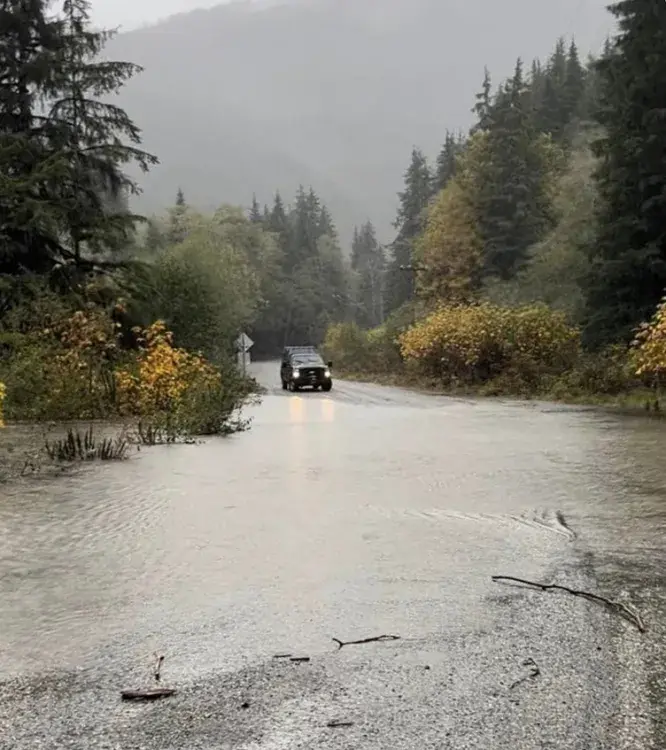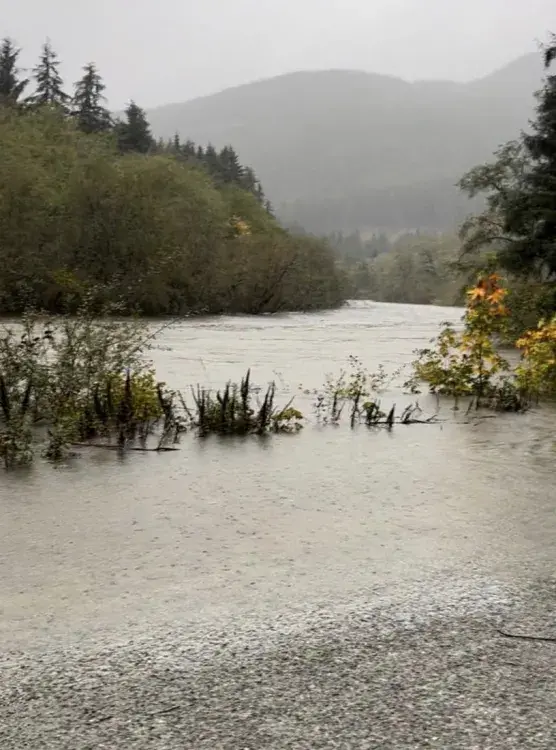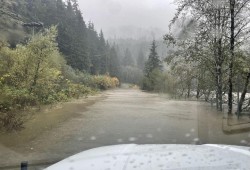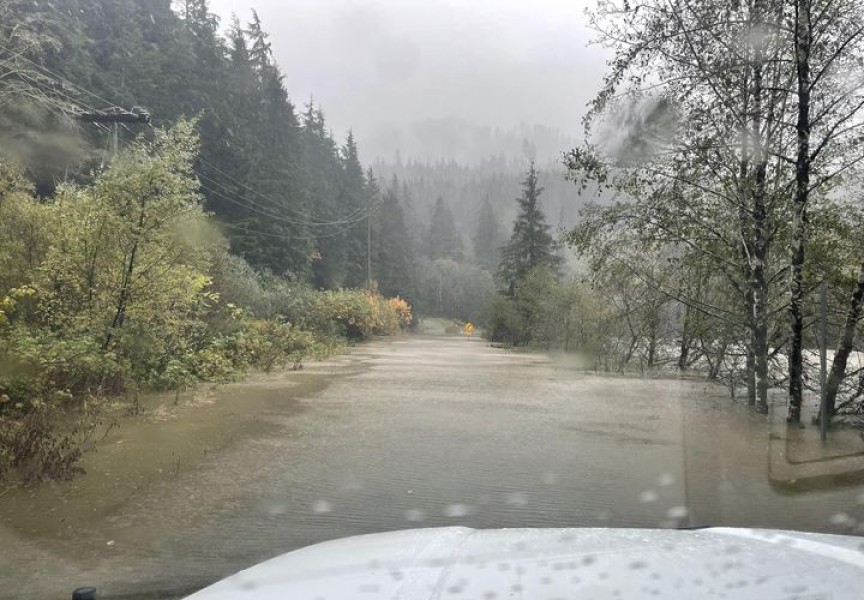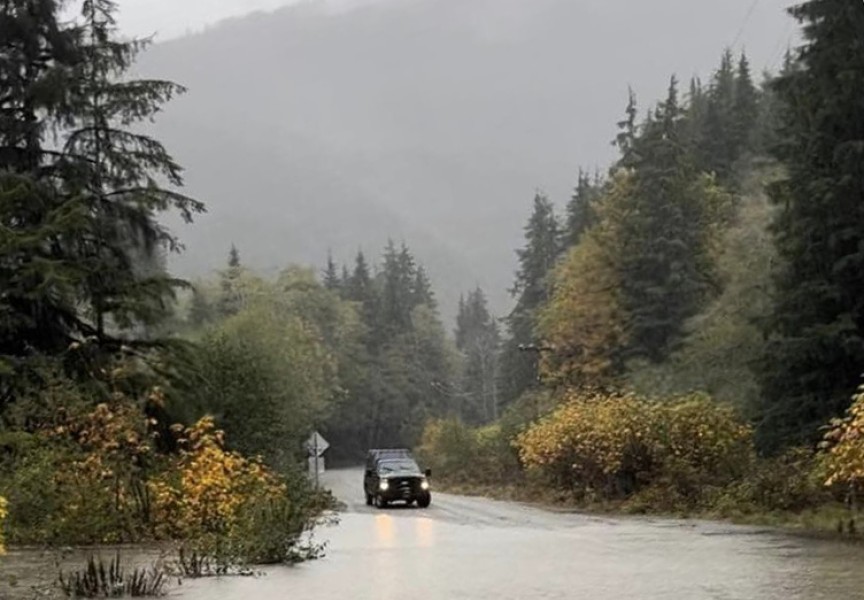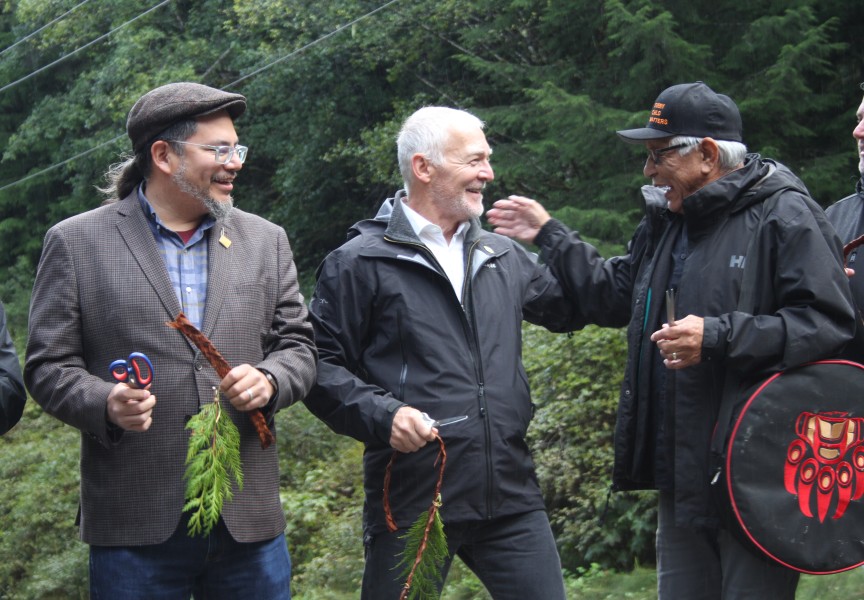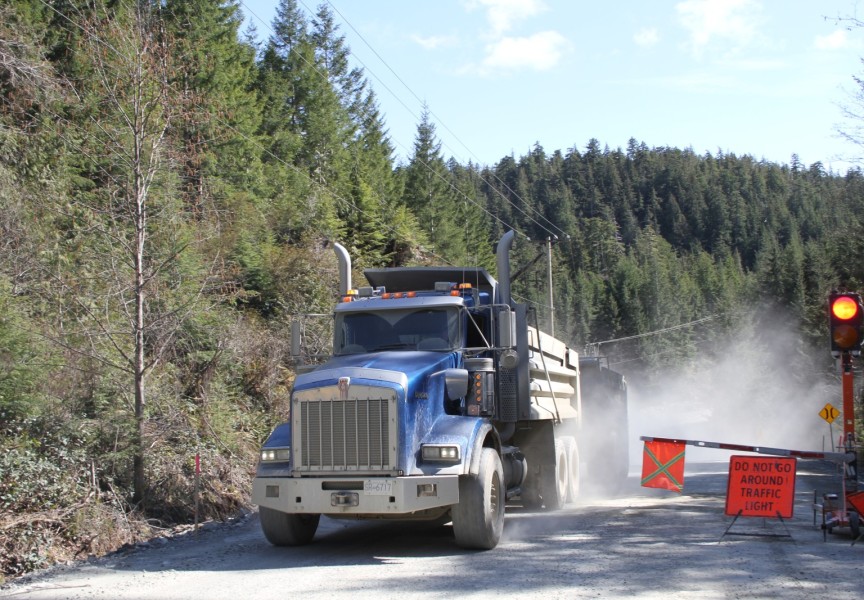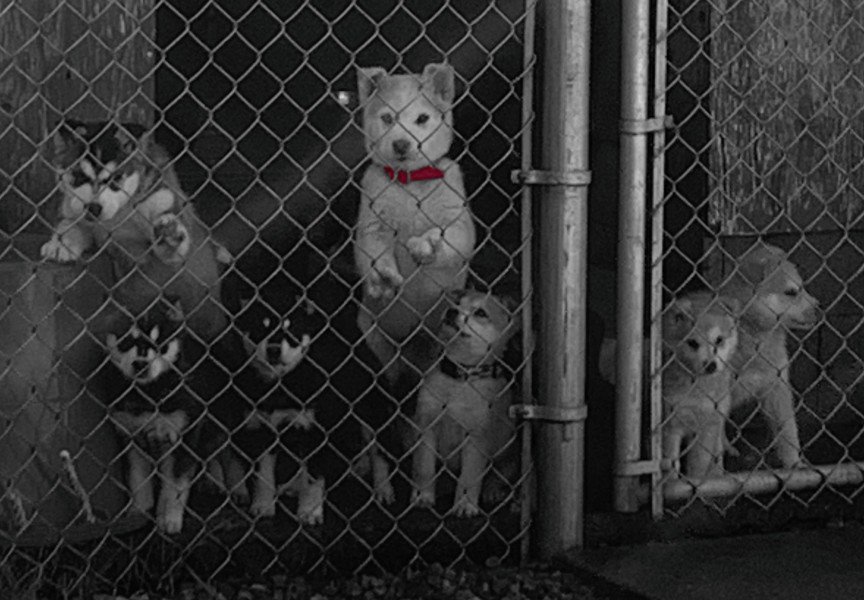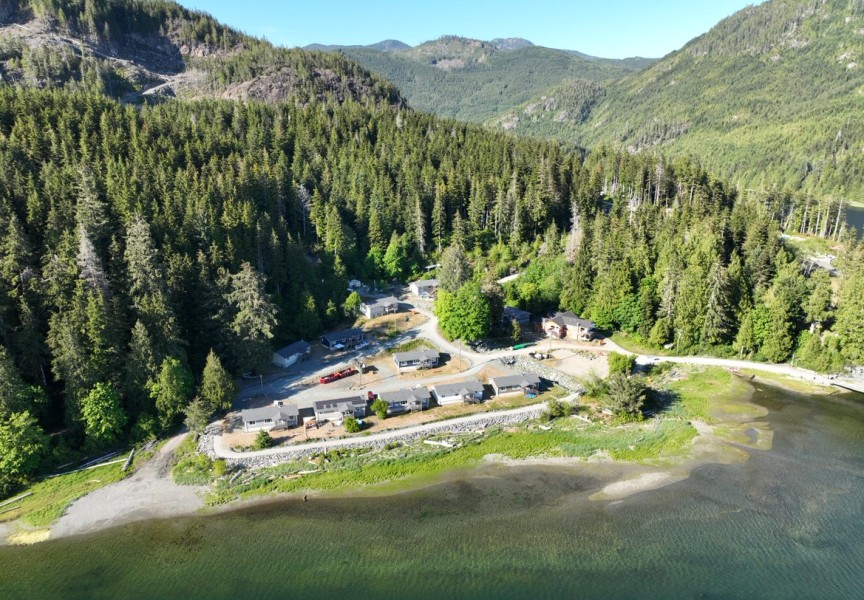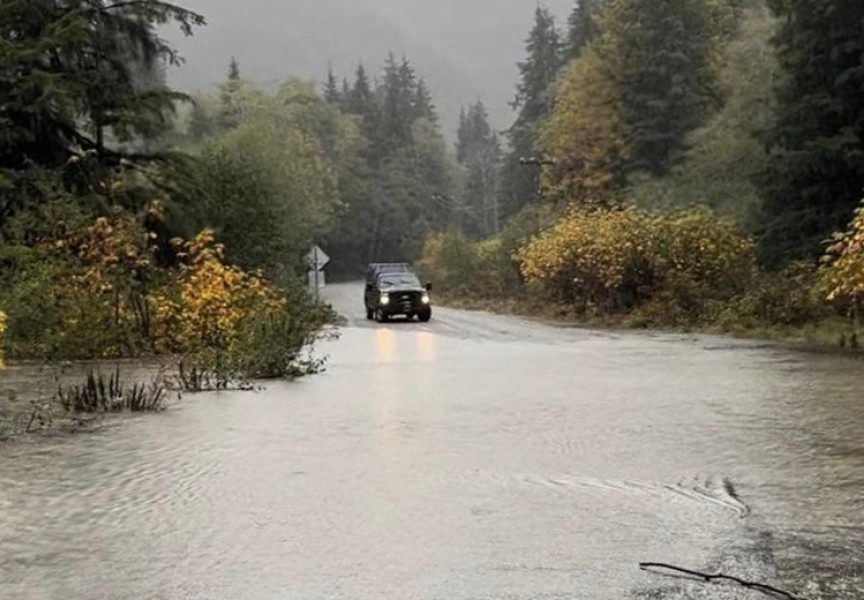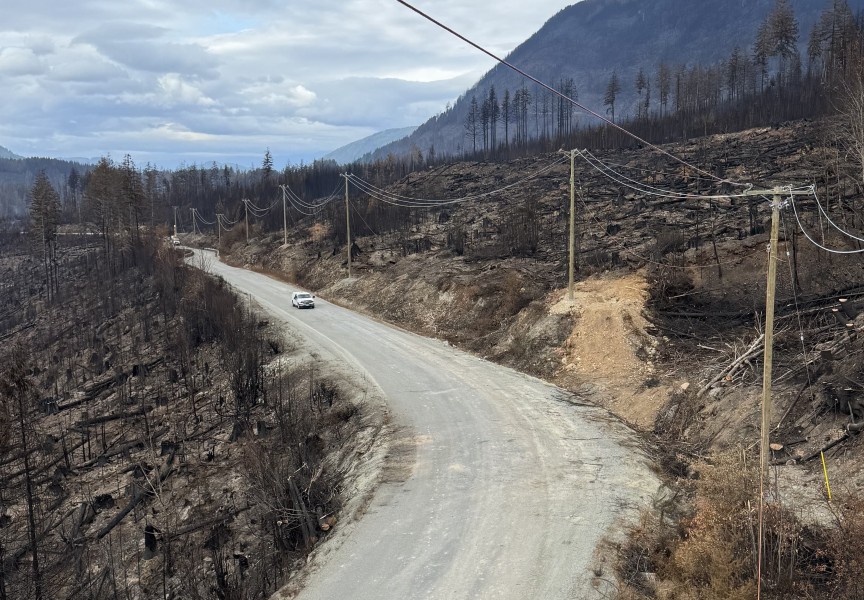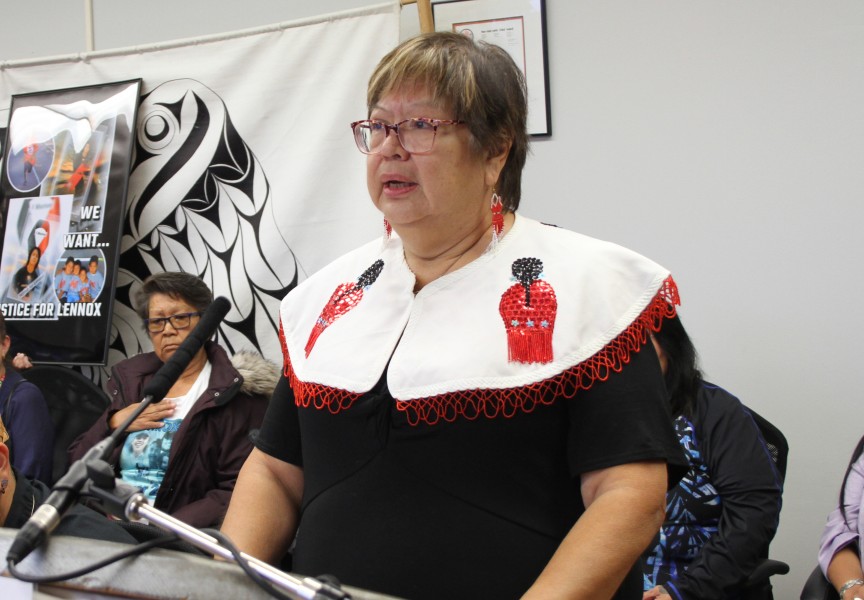A pair of tragedies on a flooded Bamfield road during a recent heavy rainfall is bringing up critical questions about how the public should be alerted on the route, says Huu-ay-aht’s elected chief.
On Oct. 18 Bob Baden and Ken Duncan, two Bamfield locals with years of familiarity with the area, lost their lives when a section Bamfield Main became submerged in water, sending their vehicles into a rapidly swelling Sarita River. This occurred at high tide early that afternoon, during an atmospheric river that brought a month’s worth of rainfall to the region over three days. Days after the rain ceased, emergency personnel were still working to retrieve the submerged vehicles.
As the water was rising on Oct. 18, some travellers managed to pass the road’s hazardous section next to the Sarita, while others turned back to wait until the tide lowered. While the Bamfield community and its Huu-ay-aht neighbours reflect on the tragedies, the First Nation’s chief councillor believes that serious discussions are needed to better inform the public of hazards in the future.
“Would those individuals have made different decisions if the risks were understood and communicated more clearly and more promptly?” asked John Jack. “I definitely think that other things can be done. Whether or not they are done will depend on the conversations that we have with the province, and whether or not we're able to access resources for the purpose of climate change mitigation and adaptation.”
“The most impactful thing we can change, I think, is monitoring, communication and who makes the call if closing the road or a section of the road is needed,” added Jack.
After decades of lobbying, three years of construction and multiple fatalities, an upgrade to the 77-kilometre stretch from Port Alberni to Bamfield was completed a year ago. Almost 300,000 cubic metres of gravel was dispersed to build up the road, which received a more durable chip-sealed surface to improve safety for travellers to Bamfield, the neighbouring Huu-ay-aht village of Anacla and the Ditidaht community of Nitinaht, which uses half of Bamfield Main before branching east. The project cost over $40 million with most of this covered by the province and at least $5 million contributed by the Huu-ay-aht.
Almost 300 culverts were replaced or repaired to improve drainage over the route, and Jack said that an average of 30 centimetres of gravel was laid onto the road. But this didn’t stop the surging waters on that fatal Saturday afternoon. Elsewhere in B.C. at least one other person died due to the heavy rainfall, while another man is missing after being seen by a swelling Coquitlam River.
“From what I've been told, this wasn't any old storm; this was something special that was over and above what normally happens,” said Jack. “As I understand, and I'm not an expert, the water came from more than just the river. It was pouring off of the slopes in ways that aren't typical.”
Although it received millions in upgrades, with hopes of allowing more Huu-ay-aht members to move to their home territory while the region opens up to tourism, Bamfield Main remains an industrial road under the same classification it had when forestry companies first built it in the early 1970s. Negotiations for the Maa-nulth treaty specified that the provincial government technically owns the route, said Jack, although maintenance falls under those responsible for forestry operations in the area. This includes the Huu-ay-aht, Mosaic Forest Services and C̕awak ʔqin Forestry, a joint partnership between the Huu-ay-aht and Western Forest Products.
Despite this, personnel from the Ministry of Forests came to look at the road after the tragic weekend, while staff from the Ministry of Transportation and Infrastructure are expected to assess the route in late October.
“There's some real responsiveness there and it's a good sign on the relationship building that we're doing,” said Jack of the provincial government’s attention. “It's not a highway and it's not falling under municipal roads at all, so they're coming to the table out of pure goodwill, I think.”
Meanwhile, the neighbouring Ditidaht First Nation has been in the final stage of treaty negotiations for the past five years, discussions that could bring in the need to upgrade the road to Nitinaht after it branches off of Bamfield Main. This route served as a detour for essential transport while a wildfire closed Highway 4 in the summer of 2023.
“Things are changing and they're changing in a way that needs to be directly considered,” commented Jack. “We can't ignore this anymore because it's challenging, or it's inconvenient or it costs a lot of money. Is the money question more important than the lives?”

